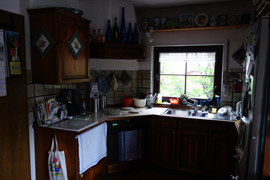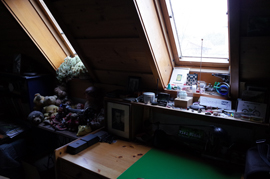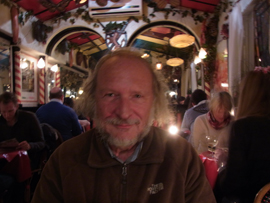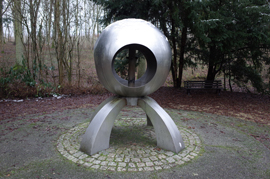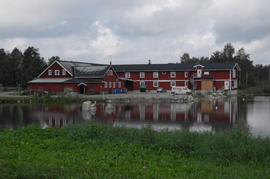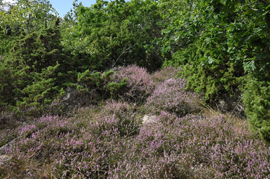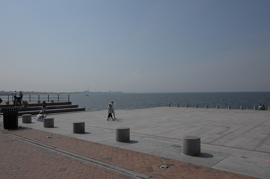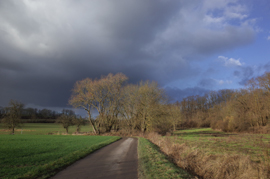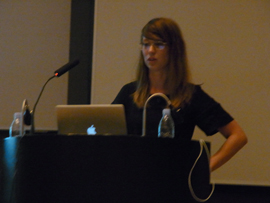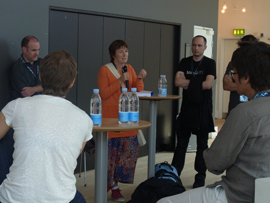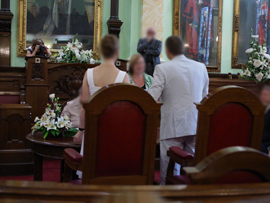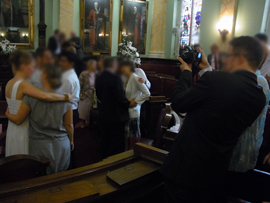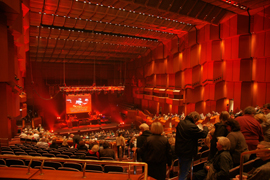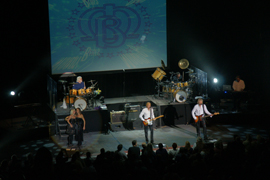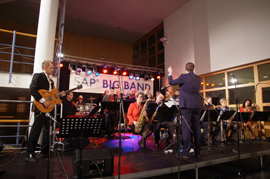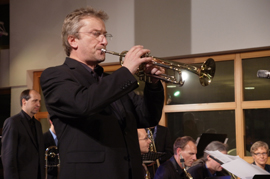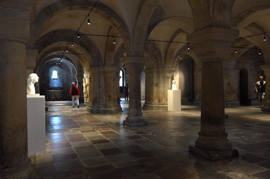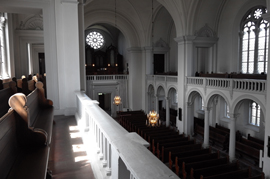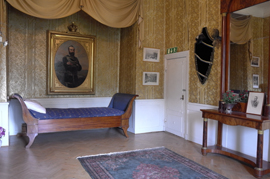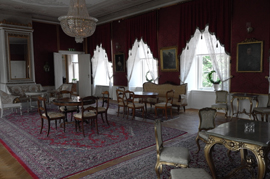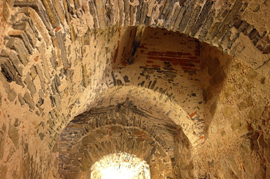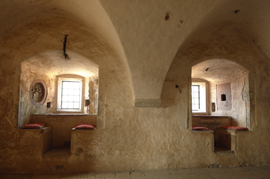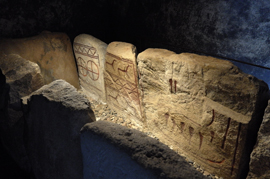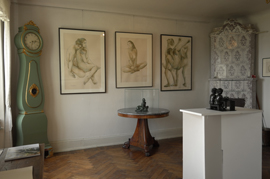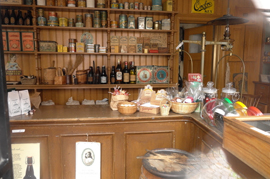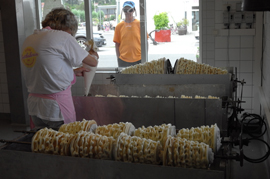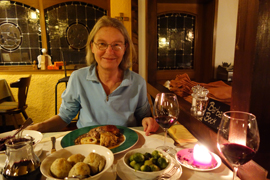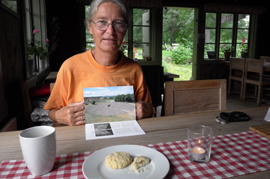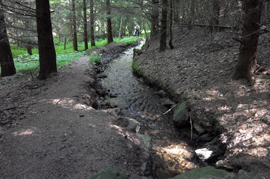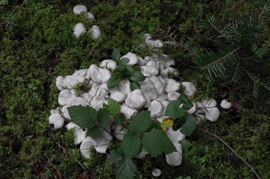General: Physical Limits of Photography: Insufficient Light - Part 7
Part 1 | Part 2 | Part 3 | Part 4 | Part 5 | Part 6 | Part 7
Overview of the Results | What Does This Tell Us? | Conclusion | References
In this series of articles, I will describe an example of where photography is reaching the limits of physics, namely, when light is scarce. Many photographers expect even in this case that their camera delivers perfect photos. In this series, I will try to explain why this is not possible. And I would also like to address the differences between large and small sensors, because I have the impression that many owners of compact cameras expect too much from their small-sensor cameras, among others, because they ignore or do not know what the difference implies.
The first part in the series serves as an introduction to the topic, asks for reasons for unsatisfactory, particularly blurry, photos, and discusses possible "countermeasures". In the second and third parts, which are supplemented by additional pages with test images, I compare cameras with sensors of different sizes with respect to their performance at different ISO values. In the fourth part, I present the concept of an "exposure value" (EV) as a measure of the amount of light that is available for a photo and present sample photos for illustration. In the fifth and sixth parts, I present examples of situations in which only little light is available. For illustration, I provide the exposure values and other photographic data. In this seventh and last part, I try to summarize the results.
Overview of the Results
The following table provides an overview of the exposure value (EV) limits in my example photos:
| Situation | Low Exposure Value (My Own Photos) |
High Exposure Value (My Own Photos) |
Interior Shots in One's Own or Someone Else's Apartment (Daylight, Mixed Light)
|
||
Typical exposure value (my photos): EV 5-6 |
EV 3.7: 1/8 s, f/1.8, ISO 200 (RX100) |
EV 6.5: 1/90 s, f/4, ISO 1600
(GR) |
Interior Shots in One's Own or Someone Else's Apartment (Artificial Light) |
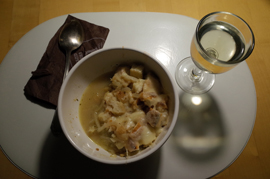 |
|
| Typical exposure value (my photos): EV 4-5 | EV 3.6: 1/2 s, f/3.5, ISO 200 EV -0.7 (CX4) > EV
2,9 |
EV 8.5: 1/180 s, f/5.6, ISO 1600 (GR) |
Outdoor Shots at Dull Days (Morning, Afternoon, Evening)
|
||
Typical exposure value (my photos): EV 10-12 |
EV 8.5: 1/90 s, f/4, ISO 400 (GR) |
EV 13.6: 1/320 s, f/6.3, ISO 100 (LXV) |
Outdoor Shots at Bright Days (Sommer) |
||
| Typical exposure value (my photos): EV 13-15 | EV 13.0: 1/800 s, f/6.3, ISO 400 (LXV) |
EV 16.0: 1/2000 s, f/8, ISO 200 (LXV) |
Outdoor Shots at Bright Days (Winter) |
||
| Typical exposure value (my photos): EV 12-14 | EV 12.9: 1/1000 s, f/5.6, ISO 400 (GR) |
EV 14.3: 1/2000 s, f/6.3, ISO 400 (GR) |
Conferences, Meetings
|
||
| Typical exposure value (my photos): EV 4-8 | EV 3.3: 1/4 s, f/6.2, ISO 1600 (GXRP10) |
EV 10.6: 1/79 s, f/4.6, ISO 109, EV -0,3 (GXRP10) > EV
10,3 |
Weddings, Family Events
|
||
| Typical exposure value (my photos): EV 4-6 | EV 4.3: 1/50 s, f/2.5, ISO 1600, EV -0.3 (A12-50) > EV
4,0 |
EV 5.9: 1/40 s, 1:3.5, ISO 800, EV -0.7 (P10) |
Events (Concerts, ...): Moody Blues |
||
| Typical exposure value (my photos): EV 5-8 | EV 4.9: 1/10 s, f/3.5, ISO 400, EV -1.7 (SA700) > EV
3,2 |
EV 10.3: 1/160 s, f/5.6, ISO, EV
-1.7 400 (SA700) > EV 8,6 |
Events (Concerts, ...): SAP Big Band
|
||
| Typical exposure value (my photos): EV 4-5 | EV 4.5: 1/30 s, f/3.5, ISO 1600, EV -0.3 (GXRA16) > EV
4,2 |
EV 5.6: 1/25 s, f/5.5, ISO 1600, EV -0.3 (GXRA16) > EV
5,3 |
Churches (Interior)
|
||
| Typical exposure value (my photos): EV 4-8 | EV 2.3: 1/13 s, f/3.5, ISO 3200, EV -1.0 (LXV) > EV
1,3 |
EV 9.0: 1/320 s, f/5.0, ISO 1600 (LXV) |
Castles, Fortresses, and Museums (Interior): Castles
|
||
| Typical exposure value (my photos): EV 5-8 | EV 4.9: 1/40 s, f/3.5, ISO 1600 (LXV) |
EV 8.6: 1/250 s, f/5.0, ISO 1600 (LXV) |
Castles, Fortresses, and Museums (Interior): Fortresses
|
||
| Typical exposure value (my photos): EV 3-6 | EV 0.6: 1/4 s, f/3.5, ISO 3200 (LXV) |
EV 6.7: 1/160 s, f/4.5, ISO 3200 (LXV) |
Castles, Fortresses, and Museums (Interior): Museums
|
||
| Typical exposure value (my photos): EV 4-8 | EV 3.5: 1/30 s, f/3.5, ISO 3200 (LXV) |
EV 9.3: 1/50 s, f/3.5, ISO 100 (LXV) |
Halls, Market Halls, Shops (Interior)
|
||
| Typical exposure value (my photos): EV 8-9 | EV 5.3: 1/80 s, f/4, ISO 3200 (LXV) |
EV 11.0: 1/800 s, f/6.3, ISO 1600 (LXV) |
Restaurants (Interior)
|
||
| Typical exposure value (my photos): EV 4-6 | EV 2.0: 1/20 s, f/1.8, ISO 1600 (RX100) |
EV 9.0: 1/125 s, f/8, ISO 1600 (LXV) |
Forests, Woods
|
||
| Typical exposure value (my photos): EV 4-9 | EV 4.3: 1/50 s, f/3.5, ISO 3200, EV -0.7 (LXV) > EV
3,6 |
EV 11.2: 1/160 s, f/11, ISO 800, EV -0.7 (LXV) > EV
10.5 |
The following table summarizes the table above without pictures into a somewhat more concise format:
Exposure Value EV (my own photos) |
About Exposure Values EV
(graphical) (my own photos) |
|||||||||||||||||||
| Situation | Low |
High |
Typical |
0 |
1 |
2 |
3 |
4 |
5 |
6 |
7 |
8 |
9 |
10 |
11 |
12 |
13 |
14 |
15 |
16 |
Interior Shots (Daylight, Mixed Light) |
3.7 |
6.5 |
5-6 |
x |
x |
x |
x |
|||||||||||||
| Interior Shots (Artificial Light) | 2.9 |
8.5 |
4-5 |
x |
x |
x |
x |
x |
x |
|||||||||||
Outdoor Shots at Dull Days |
8.5 |
13.6 |
10-12 |
x |
x |
x |
x |
x |
x |
|||||||||||
| Outdoor Shots at Bright Days (Winter) | 12.9 |
14.3 |
12-14 |
x |
x |
x |
||||||||||||||
| Outdoor Shots at Bright Days (Summer) | 13.0 |
16.0 |
13-15 |
x |
x |
x |
x |
|||||||||||||
| Conferences, Meetings | 3.3 |
10.3 |
4-8 |
x |
x |
x |
x |
x |
x |
x |
x |
|||||||||
| Weddings, Family Events | 4.0 |
5.6 |
4-6 |
x |
x |
x |
||||||||||||||
| Events (Concerts, ...): Moody Blues | 3.2 |
8.6 |
5-8 |
x |
x |
x |
x |
x |
x |
|||||||||||
| Events (Concerts, ...): SAP Big Band | 4.2 |
5.3 |
4-5 |
x |
x |
|||||||||||||||
| Churches (Interior) | 1.3 |
9.0 |
4-8 |
x |
x |
x |
x |
x |
x |
x |
x |
x |
||||||||
| Castles (Interior) | 4.9 |
8.6 |
5-8 |
x |
x |
x |
x |
x |
||||||||||||
| Fortresses (Interior) | 0.6 |
6.7 |
3-6 |
x |
x |
x |
x |
x |
x |
|||||||||||
| Museums (Interior) | 3.5 |
9.3 |
4-8 |
x |
x |
x |
x |
x |
x |
x |
||||||||||
| Halls, Market Halls, Shops (Interior) | 5.3 |
11.0 |
8-9 |
x |
x |
x |
x |
x |
||||||||||||
| Restaurants (Interior) | 2.0 |
9.0 |
4-6 |
x |
x |
x |
x |
x |
x |
|||||||||||
| Forests, Woods | 3.6 |
10.5 |
4-9 |
x |
x |
x |
x |
x |
x |
x |
x |
|||||||||
What Does This Tells Us?
First of all, the results of my excursion into exposure values at different lighting conditions should not be taken too seriously because they were not created in any systematic fashion. At least, they provide some orientation as to what exposure values can be expected at which shooting situation. The upper limit is more or less irrelevant, except for conditions where we have to consider overexposure - but this is more or less limited to bright days. On the other hand, there are quite a few situations, where exposure values go below EV 5, EV 4, and even lower. These are the cases, in which many cameras reach their limits, particularly when shorter exposure times are needed because the subjects may move. The following subsection of a table that was already presented in Part 4 indicates, why we run into problems at such low light levels:
| ISO | Table for Aperture:
f/2.8 |
Table for Aperture:
f/5.6 |
|||||||||||
Exposure Value (EV) |
Exposure Value
(EV) |
||||||||||||
0 |
1 |
2 |
3 |
4 |
5 |
0 |
1 |
2 |
3 |
4 |
5 |
||
Exposure Time (Shutter
Speed) |
Exposure Time (Shutter
Speed) |
||||||||||||
| 100 | 8 | 4 | 2 | 1 | 1/2 | 1/4 | 32 | 16 | 8 | 4 | 2 | 1 | |
| 200 | 4 | 2 | 1 | 1/2 | 1/4 | 1/8 | 16 | 8 | 4 | 2 | 1 | 1/2 | |
| 400 | 2 | 1 | 1/2 | 1/4 | 1/8 | 1/15 | 8 | 4 | 2 | 1 | 1/2 | 1/4 | |
| 800 | 1 | 1/2 | 1/4 | 1/8 | 1/15 | 1/30 | 4 | 2 | 1 | 1/2 | 1/4 | 1/8 | |
| 1600 | 1/2 | 1/4 | 1/8 | 1/15 | 1/30 | 1/60 | 2 | 1 | 1/2 | 1/4 | 1/8 | 1/15 | |
| 3200 | 1/4 | 1/8 | 1/15 | 1/30 | 1/60 | 1/125 | 1 | 1/2 | 1/4 | 1/8 | 1/15 | 1/30 | |
| 6400 | 1/8 | 1/15 | 1/30 | 1/60 | 1/125 | 1/250 | 1/2 | 1/4 | 1/8 | 1/15 | 1/30 | 1/60 | |
| 12800 | 1/15 | 1/30 | 1/60 | 1/125 | 1/250 | 1/500 | 1/4 | 1/8 | 1/15 | 1/30 | 1/60 | 1/125 | |
| 25600 | 1/30 | 1/60 | 1/125 | 1/250 | 1/500 | 1/1000 | 1/8 | 1/15 | 1/30 | 1/60 | 1/125 | 1/250 | |
Many small sensor cameras neither open their aperture as far as f/2.8 or more (typically, f/3.5 is their limit at the wide angle end and much less at the telephoto end), and they also perform poorly at ISO values higher than ISO 400. One or the other small-sensor camera may be an exception to this rule and therefore, you will have to check your camera to see how well it fares under such poor lighting conditions.
One should also note that many camera have a lower maximum aperture at the tele end. This means that, particularly in low light conditions, exposure times are lower or ISO has to be set to higher values. This is true not only of small sensor cameras but also of cameras with larger sensors (a few newer cameras have a fixed aperture across all focal lengths or close aperture only a little).
Conclusion
Who expects perfect photos from his or her small sensor compact or superzoom camera under all conditions has not dealt with the basics of photography. Of course, not everyone who takes photos wants to do so. But everyone should, at least, accept that his or her camera is a device that is subject to the laws of physics and has certain "minimum requirements" on the amount of light that is available to work satisfactorily. Put simply, these cameras are, at least at the present state of art, "fair weather cameras." If you require good to very good results under low light conditions, you have to invest in cameras with larger sensors, which provide good image quality even at high ISO values - and mostly have, or can use, fast lenses. But even such cameras reach the limits of what is physically possible at some point.
In general, one can conclude that you cannot cover all photographic needs with just one camera. So if you need to or want to frequently shoot in low light, you should consider purchasing a camera just for this purpose. And again, it all depends on the conditions under which the camera is to be used, for example, in small or large spaces, with or without flash, and so on. But that would be already enough material to fill another article ...
References
- Elmar Baumann: Lichtwert, Lichtwert-Diagramm (www.elmar-baumann.de/fotografie/fragen/lichtwert.html) (in German)
| 04.01.2023 |
